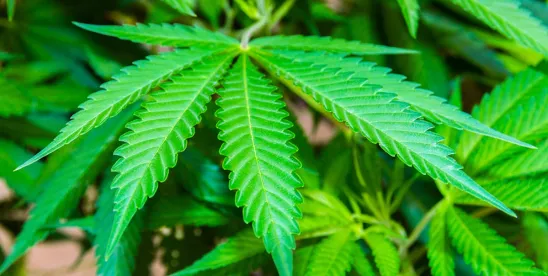I feel I never told you
The story of the ghost
To paraphrase the legendary Dave Chapelle, in the midst of impersonating Rick James, “cannabis is a hell of a drug.” Thankfully I don’t mean that in the same sense as Mr. Chapelle/James did. I mean that marijuana and its relatively newly defined sister plant “hemp” are unique in that they have experienced explosive growth and remarkable evolutions in legal status even though marijuana has, for the entirety of this growth and evolution, remained a Schedule I substance under the federal Controlled Substances Act.
There are several reasons for this almost unprecedented legal anomaly, including federal guidance documents and a federal appropriations rider discouraging state-authorized medical cannabis use. But the thousand-pound gorilla in the room – or the ghost, for this title to make sense – is the development of intoxicating cannabinoids that Congress arguably (if unwittingly) allowed when it passed the 2018 Farm Bill. In a few short years, intoxicating cannabinoids have exploded on the scene, as anyone who walks into a gas station, grocery store, or convenience store can attest. This multibillion-dollar industry grew from scratch to become a thorn in the state-licensed marijuana industry and poses challenging questions for Congress as it debates the next Farm Bill this year.
Let’s get into it.
A Law, a “Loophole,” or a Trojan Horse?
If you talk to marijuana operators, you will almost certainly hear about the “loophole” in the 2018 Farm Bill that allowed for the creation and subsequent explosion of non-marijuana products that compete with marijuana products.
So, what exactly is this “loophole”?
At the federal level, the Controlled Substances Act has defined “marijuana” for more than 50 years as:
The term [marijuana] means all parts of the plant Cannabis sativa L., whether growing or not; the seeds thereof; the resin extracted from any part of such plant; and every compound, manufacture, salt, derivative, mixture, or preparation of such plant, its seeds or resin. Such term does not include the mature stalks of such plant, fiber produced from such stalks, oil or cake made from the seeds of such plant, any other compound, manufacture, salt, derivative, mixture, or preparation of such mature stalks (except the resin extracted therefrom), fiber, oil, or cake, or the sterilized seed of such plant which is incapable of germination.
In the 2014 and 2018 Farm Bills, Congress created a legal definition of “hemp”:
the plant Cannabis sativa L. and any part of such plant, whether growing or not, with a delta-9 tetrahydrocannabinol concentration of not more than 0.3 percent on a dry weight basis.
Shortly after Congress created this separate definition of hemp, savvy (and, in some instances, unsavory) operators concluded that Congress had created a loophole of sorts that would allow for products that contained cannabinoids from the cannabis plant – even those with psychoactive or intoxicating effects – as long as the concentration of delta-9 THC on a dry weight basis is not more than 0.3%. It was this interpretation of the Farm Bill, replicated in the 2018 version, that led to the proliferation of consumable products containing delta-8 THC, delta-10 THC, and the like.
Ergo, the loophole. And it makes me think of these lyrics:
For this was my big secret
How I’d get aheadHis answer came in actions
He never spoke a wordI somehow feel forsaken
Like he had closed the doorI guess I just stopped needing him
As much as once before
In this author’s opinion, Congress did not intend in 2018 for the intoxicating hemp boom as we know it today. I also believe the Farm Bill on its face allows for many of the intoxicating hemp products we now see today, be it at a dispensary that resembles an Apple Store to a row of shelves at a gas station. I further believe that most legislators probably didn’t have the first idea of what they were voting on in 2018. Maybe that makes me a simpleton or maybe someone who can keep more than one idea in my head at the same time.
Those dual concepts pose an interesting challenge to those who consider whether one should look to the words of a statute or the intent of those who enacted the law. As a general principle, I tend to look to the former, but I certainly understand those who take the position that an unintended loophole should not be used to end-run legislative intent.
I guess there are some people out there who could argue that Congress knew it was creating an expansive legal hemp market, but (1) I haven’t seen many people whose opinion I value seriously press that argument, and (2) I would have expected Congress to create a regulatory framework to accompany this broad new category of intoxicating products.
So, What’s Next?
Regardless of how you view the implications of the 2018 Farm Bill, it is hard to disagree that it led to the development of a substantial industry in intoxicating hemp. Intoxicating hemp companies have generated hundreds of millions (if not billions) of dollars in tax revenue for state and federal coffers and have offered millions of Americans jobs and therapies that were not previously available. Whether that is a good thing or a bad thing is, I suppose, in the eye of the beholder.
And that brings us to the next Farm Bill and what it may portend for intoxicating hemp products. Though the cannabis portion of the bill will make up a tiny percentage of the Farm Bill’s text and there are enormous consequences to so many other provisions of the massive legislation, one would be wrong to assume there isn’t a street fight occurring in Washington between marijuana operators and hemp operators. Tens of millions of dollars – at least – are being spent on lobbying efforts to influence federal cannabis policy. Lawmakers are regularly fielding questions from constituents and their local media about the proliferation of hemp in its various forms. This is going to come down to the wire, and the specific language (likely with tweaks imperceptible to the average American and even many in Congress) will have enormous consequences for the cannabis industry in America. Truly, the devil – ahem, ghost – will be in the details.
At the end of the day, I suspect Congress will land on some sort of compromise that allows for at least some versions of intoxicating hemp products. If true, I would expect Congress to direct some agency or agencies to adopt regulations governing the manufacturing, testing, marketing, and sales of such products. Operators targeting children or making health claims aimed at vulnerable populations are in the most jeopardy, and purveyors of novel cannabinoids and high-THC products should be concerned as well. Low-THC products, including the increasingly popular hemp beverages, seem to have occupied a different place in the public eye and may be codified, albeit subject to more definite regulation.
If I’m right, marijuana operators won’t be completely satisfied, but neither will hemp operators. Maybe I’m just crazy enough to believe Congress can find a compromise.
Conclusion
For the past almost seven years, intoxicating cannabinoids have — in the eyes of many — become a sort of ghost haunting marijuana industry. I’m not sure that’s the right way to look at it. While I have no doubt, and certainly understand why, many marijuana operators would prefer to exist in a world without the perceived competition from these hemp products, I’ll ask again: Why can’t weed be friends?




 />i
/>i
